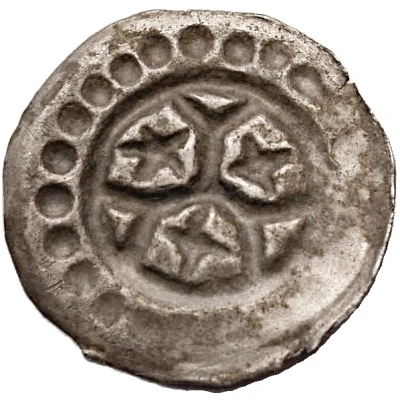


© Haljak Coin Auction
Denier Bracteate Memel ND
| Billon | 0.38 g | 15 mm |
| Issuer | Bishopric of Courland (Livonian Confederation) |
|---|---|
| Type | Standard circulation coin |
| Years | 1252-1299 |
| Value | 1 Hohlpfennig |
| Currency | Denier (1234-1426) |
| Composition | Billon |
| Weight | 0.38 g |
| Diameter | 15 mm |
| Shape | Round (irregular) |
| Technique | Hammered (bracteate) |
| Orientation | Variable alignment ↺ |
| Demonetized | Yes |
| Updated | 2024-10-06 |
| Numista | N#161591 |
|---|---|
| Rarity index | 97% |
Reverse
Uniface (brakteat).
Edge
Plain
Interesting fact
One interesting fact about this coin is that it was used as a form of currency in the Bishopric of Courland, which was a region in the Livonian Confederation, a medieval state that existed from the 13th to the 16th century in the territory of present-day Latvia and Estonia. The coin was made of billon, a type of alloy that consists of a mixture of silver and other metals, and it weighed 0.38 grams. Despite its small size, this coin played an important role in the economy of the region during its time.